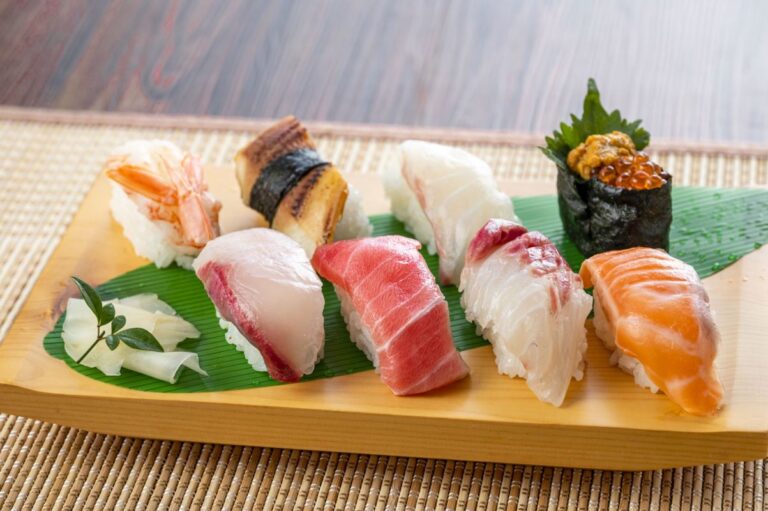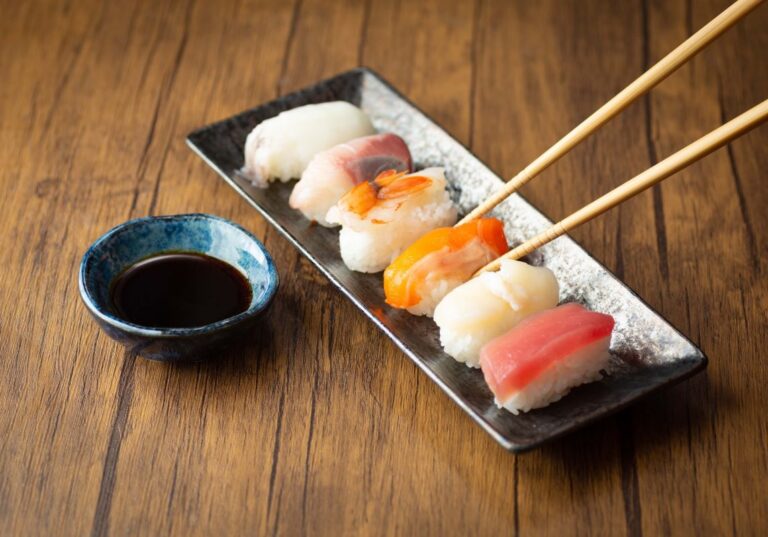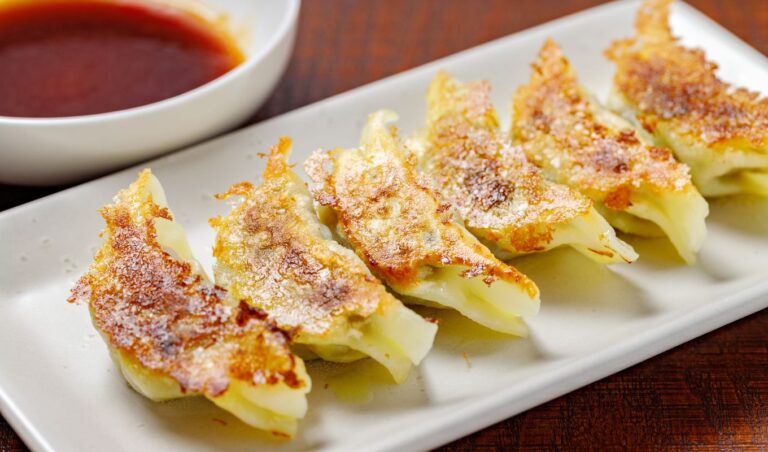Fried chicken is a fast food staple in the US, but fried seafood and vegetables are far more popular in Japan. Covered in a seasoned batter full of protein that’s so light you can usually see the seafood or vegetable right through the batter, the deep-fried dish tempura doesn’t contain much grease. (It’s actually less unhealthy than the typical bucket of grease-laden fried chicken!) Just be sure to enjoy it in moderation; a legend says that a Japanese shogun died from eating too much of it!
Tempura—or tenpura as it is actually known in Japan—refers to seafood, vegetables, and sometimes meat covered in a batter made of wheat flour and cold water that has been deep fried in a mixture of vegetable and sesame oils. The batter mixture may also include spices, eggs, oil, starch, baking soda, and even chopped dried noodles depending on the chef’s discretion and the diner’s tastes.
History Of Tempura
Although most Japanese food imported from other countries came from China, tempura’s roots can be traced to Portugal. In the 16th century CE, before Japan’s long period of isolation, Portuguese missionaries and traders frequently visited the country to export Christianity and trade goods. While in Japan, they showed the Japanese a favorite way to prepare seafood by covering it in seasoned batter and deep-frying it in oil. The dish became popular with the Japanese people and there is a myth that states that the founder of the Tokugawa shogunate, Tokugawa Ieyasu, loved tempura so much that he died from consuming too much of it. (This is not true!)
There is a similar dish to Japanese tempura that exists in Portugal even today, the deep-fried peixinhos da horta, although the Portuguese batter appears a bit less “jagged” than the Japanese batter. The word “tempura” most likely comes from the Latin word “tempora,” which means “time period.” Portuguese missionaries most likely used this word to describe the time period during which Christians were most likely to enjoy the fried seafood, the holy days on which they are supposed to eschew red meat and poultry. The word for “time period” that the missionaries repeated while making the food was probably easier for the Japanese to pronounce than peixinhos da horta!
Seafood Varieties
Although you may be used to fried chicken stateside, meat and poultry are only sometimes used as ingredients in tempura. The most popular seafood tempura varieties include squid, prawns, shrimp, scallops, crab, conger eels, sweetfish, smelt, and other seasonal fishes.
Vegetable Varieties
The most popular kinds of vegetables served tempura style include eggplants, green peppers, carrots, sweet potatoes, squashes, shiitake mushrooms, lotus roots, onions, perilla leaves, broccoli, zucchini, pea pods, okra, asparagus, potatoes, and green beans.
Serving Tempura
Tempura isn’t exactly meant for a doggy bag. In fact, if you don’t eat it as soon as it’s set on your plate (most likely fresh from the oil mere seconds before you’re served), the appetizing hard and crunchy texture of the batter becomes soft and soggy and less enticing.
Tempura is typically served atop a bowl of white rice and may be ordered in a meal set called teishoku. The popular lunch tempura teishoku includes tempura, white rice, pickles, miso soup, and a dessert like sliced fruit at an economical price. Tempura served atop soba noodles is called tensoba and tempura served atop of udon soup is called tendon.



